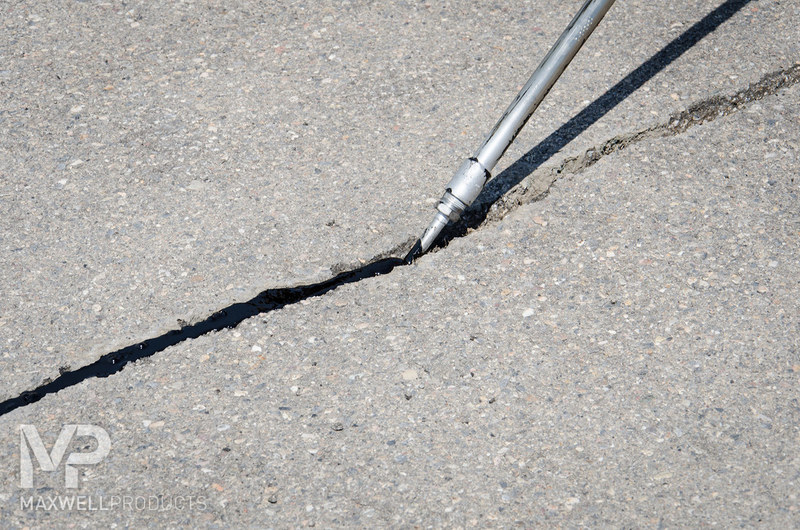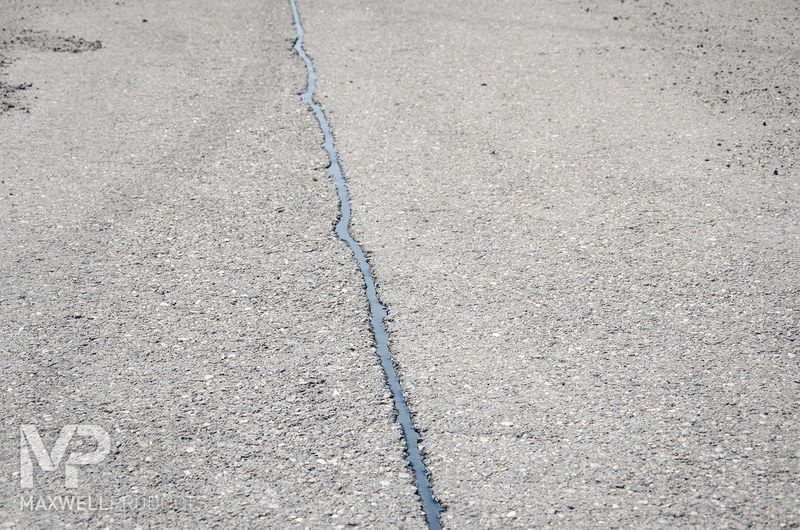View Photo
Solution Center
Repairing Transverse Cracking with:
Flush Fill Crack Seal Simple Overband Crack Seal Overband Crack Seal
Problem: Transverse Cracking
Often caused by thermal expansion/contraction, transverse cracks run perpendicular to the pavement centerline (or laydown direction) and are not part of any pavement joints or seams. Transverse cracking may also result from a reflection crack of an underlying layer or bitumen (asphalt binder) hardening.
Solution: Flush Fill Crack Seal
Another common and cost-effective method of sealing pavement cracks, flush-fill crack sealing is accomplished by filling a crack with crack sealant material flush with the surface of the pavement. There may be slight settling as the material cools, creating a very shallow channel, but flush-filling a crack seals out moisture and incompressible debris, protecting the base and walls of the crack, as well as provides a flexible filler that will move with the pavement during thermal expansion/contraction cycles. This method is usually chosen when a surface treatment or overlay is planned and/or when an overband is not wanted or required.
Comments
no comments





